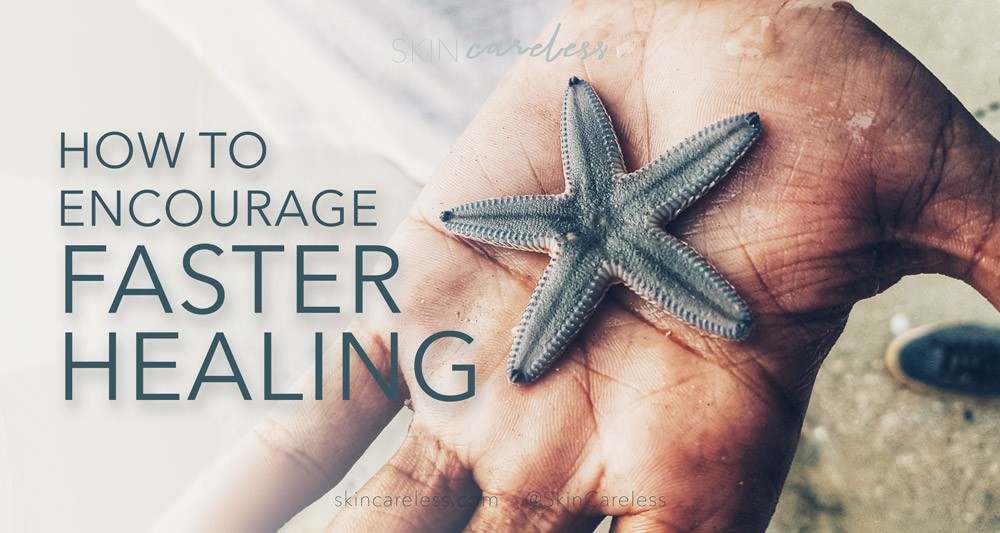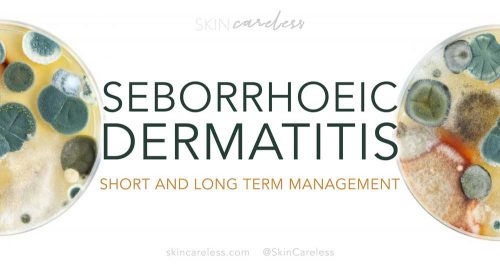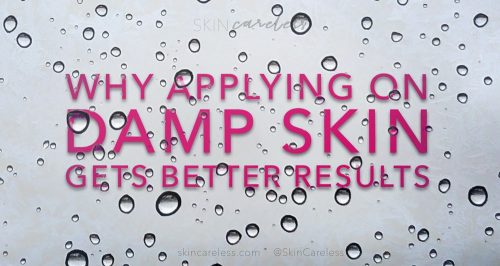Though it can feel hard to believe when that one pimple pops up the night before picture day, our skin is incredibly intelligent.
Skin is able to repair itself, healing unlike almost any other part of our bodies. While arms can’t regrow and other organs can fail, skin might be burnt, battered, broken and bruised and it’s still able to turn back time and leave (almost) no trace.
The beauty of it is that it does this incredible healing all by itself! Given time, almost any damage will be repaired to a functional extent without intervention – lucky for the lazy among us.
And so the age-old adage was born: “Take that bandaid off and let your cut dry out! It’ll heal better”.
Unfortunately, I’m here to tell you that’s not entirely true. Left to its own devices, an imperfect healing process is all too common, and the remaining marks, flaky, tight, red, oily, or burnt skin are what takes days or even weeks to resolve – and can make you feel like you’re not making any progress in your skin journey.
This self-healing process so revered by seemingly all the adults in my life, while innate, can use some extra support to get the best results.
So if you’ve recently had a minor scrape from running for the bus, or just stumbled into a rough pimple week and you’re looking to heal back up and get back out there, here’s the things you should be doing to help the process along.
Healing skin is simple
The main rule for healing skin is simple: keep it simple! The new skin growing in is just figuring out its way in life and wants to be left in peace. Now’s not the time to ruffle its feathers with a new chemical peel or serum. You never know how your skin is going to react and newly healed skin is in the most sensitive and vulnerable state. Possible reactions include swelling, itchiness, stinging and redness, and will prolong the healing period.
Cut it out
(No, not literally) Stop doing whatever is spawning the issue. This tip seems obvious at first, but often we’re doing damaging things without even knowing it. This goes for improper care, bad habits, and harmful ingredients. You can’t start to heal until you’ve stopped the injury – that’s like sandpapering your skin non-stop and wondering why it keeps hurting and never heals over.
Keep it moist
It’s been shown that a moist environment encourages faster, safer, and more scar-free healing. Dried out wound that have formed scabs are liable to be exposed too early when the scab is removed, damaging the fresh skin underneath in the process, leading to a larger scab and creating a cycle of damage.
The best way to moisturise generalised damage like wind or sun burn is with an occlusive ingredient. These prevent water from evaporation from your skin cells into the dry air. Put them on last in your routine to ‘seal in’ the goodness.
If you’re recovering from an open injury or wound, a waterproof dressing should be used instead to completely protect and maintain hydration in the area until weeping stops and fresh skin appears. Sorry mum; I’m leaving my bandaid where it is!
Please note to NEVER occlude a real hot water or fire burn until well after the accident. It traps in the heat in the lower layers of skin and prolongs the damage.
Keep it calm
Maintaining a non-inflamed environment is key to the healing process. Using highly fragranced or drying products will only inflame the area deep down, leading to slower healing and worse scarring.
Unfortunately, irritating ingredients are everywhere. Even though they mentally feel pampering and soothing, eliminate excessive surfactants, essential or perfume oils, and even active ingredients like my beloved acids. Just for the time being though!
Keep it protected
By now you know better than to tan. I’ve told you so many times – none of you are still doing it… right? But any exposure of healing skin to the sun will be a dramatic catalyst for post-inflammatory hyperpigmentation. Badly damaged skin should ideally be kept totally out of the sun: i.e. under clothing. Use a properly formulated broad-spectrum high SPF sunscreen and reapply it often.
Doctor knows best
Over all else, follow your doctor’s instructions. If your injury is large, like something from a surgery or infection, be diligent about applying or taking the correct medications. Similarly, follow good hygiene practices. Subsequent secondary infections aren’t fun, and may have even worse consequences than the initial injury.
I know, I know. You wanted a magic product that will heal your skin faster. But it’s true that your skin will heal itself given enough gentle patience and time. 90% of healing is to do with the wait, and the rest is simple. Maybe that’s why we’re always being sold ‘miracle’ products that mean we don’t have to wait for results.





